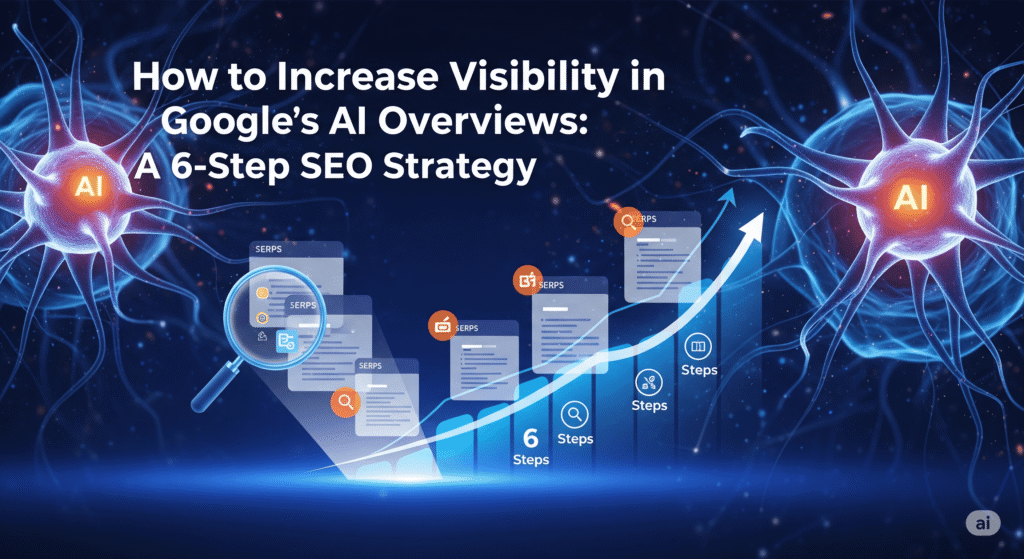Google’s AI Overviews are shaking up the way users find content online—and for many websites, that’s meant a steep drop in search traffic. But what if you could reverse-engineer your site’s visibility in these AI-generated results?
That’s exactly what we set out to do.
Instead of panicking over traffic loss, we created a 6-step AI Overview SEO strategy to analyze, optimize, and enhance our content for better indexing. The result? A 1,400% increase in AI traffic and 164 new keywords surfacing directly in Google’s AI Overviews.
Here’s how you can replicate the same strategy for your website.
1. Track AI Bot Activity Across Your Site
To appear in AI Overviews, you need to know which of your pages are being crawled by AI bots—and which are being ignored.
How to check:
- Download raw access logs from your hosting provider (like SiteGround or Hostinger).
- Upload them to GPT-4o with this prompt: “Analyze these logs for hits from user agents: google, gptbot, perplexitybot, claudebot, google-extended. Provide crawl frequency, top pages, and status codes.”
- Then ask for:
- A crawl frequency chart over time
- HTTP status breakdowns
- Top and bottom crawled pages by AI bots
This gives you clear, actionable insight into how AI sees your site.
2. Improve Internal Linking to Underperforming Pages
We noticed that our “use case” pages had almost zero bot activity. Here’s how we fixed that:
- In Ahrefs Site Explorer, go to Internal Links, filter URLs by 200 status and “use-case.”
- Find pages with poor internal linking.
- Add contextual links from high-authority content.
- Expand thin content with more relevant, unique info.
The result? These pages started surfacing in AI Overviews within a few weeks.
3. Leverage High-Trust Pages as Visibility Hubs
AI already favors some of your content—use it to your advantage.
- Expand these top-crawled pages with related subtopics.
(Example: “Planters for Modern Offices” → add “Pet-Safe Plants”) - Add structured data like schema markup.
- Link from these pages to underperforming content to pass authority.
By treating these high-traffic pages as SEO hubs, you can boost the reach of your entire site.
4. Detect and Fix AI Bot Crawl Errors
Ask GPT to analyze the same server logs for 4xx or 5xx errors:
“Highlight any crawl errors from AI bots and summarize patterns.”
What to do next:
- Redirect similar pages with 301s
- Restore accidentally deleted pages
- Build custom 404s that guide bots (and users) to helpful resources
Even your errors can become SEO opportunities.
5. Use Schema Markup to Guide AI Indexing
Schema markup makes your content more “readable” for AI.
Here are the 4 most effective schema types we used:
- ✅
Articleschema – for long-form editorial content - ✅
BlogPosting– for casual blogs and updates - ✅
HowTo– for instructional content - ✅
FAQPage– for help sections and common questions
Need help generating the schema? Use GPT:
“Generate JSON-LD Article schema with this info: Title: [x], Image: [x], Author: [x], Publisher: [x], Published: [x]”
Structured data isn’t just helpful—it’s critical.
6. Optimize for AI’s Multimodal Search
AI Overviews don’t just extract text—they pull in visual and structural elements, too.
Here’s how to upgrade your content:
- Use HTML tables (never image-based charts)
- Add alt text that is descriptive, not stuffed with keywords
- Rename image files with relevant terms
(e.g., IMG_3294.jpg → modern-office-planters.jpg) - Embed videos with full transcripts
- Structure your HTML properly with headers, lists, and semantic tags
Multimodal optimization ensures AI bots can fully understand your content—text, visuals, and all.
Final Takeaway: AI Isn’t the End of SEO — It’s an Evolution
Google’s AI Overviews may feel like a black hole at first. But with a clear AI Overview SEO strategy, you can turn this disruption into opportunity. Audit your crawl data, fix underperforming content, and make it easy for AI to read, trust, and display your site in results.
The future of search isn’t just about keywords—it’s about clarity, structure, and adaptability. And you can start that future today.

